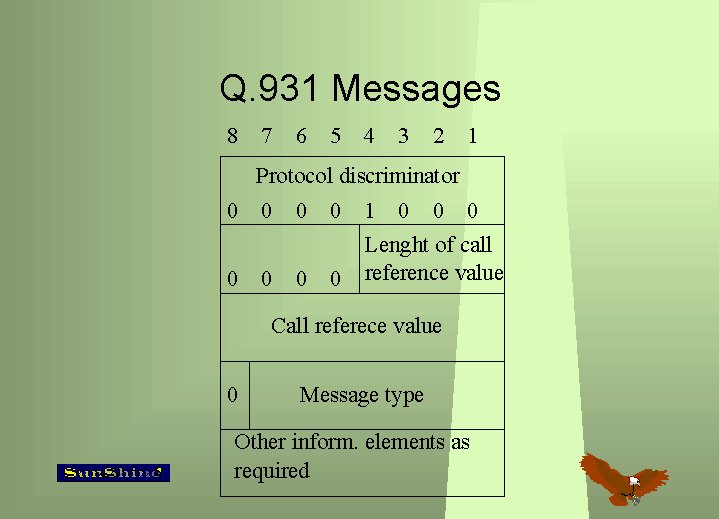
 Back to System Manual Page
Back to System Manual Page
Last update: 4.12.1995 21:07 Kaj
Q.931 module, general description
Signaling is a way for the system to create services that the user wants.
Signaling takes for instance care of that the phonecall will be correctly
routed to the called party. It will also see to it that the call will be correctly
set up, maintained and cleared. The services include dialtones, routing of
chosen numbers, knowledge of that the destination is not reached, or the line
is busy and of course information for billing. The Q.931 standard defines a
protocol that takes care of these services. This protocol is located at the third,
that is, at the network layer of the OSI protocol stack. All the above mentioned
signaling is achieved through the D-channel defined by the ISDN standard.
Q.931 will use this channel for setting up the wanted connection.
As stated in the OSI reference model, higher protocol layers depend on the
services provided by lower layers. Thus Q.931 is requesting services from
the data-link layer which resides at layer two. The Q.921 standard defines
a protocol that can be called a data-link service provider (DLSP). Q.931 is
thus the data-link service user (DLSU). Q.921 is also better known as LAPD,
as in Link Acces Protocol D-channel. Service requests that come from the
above layers are packed in LAPD frames and are sent through the network.
All Q.931 messages are built up by a certain message body.

Picture:Q.931 General message.
The protocol discriminator is the first part of every message. Its purpose is to
distinguish messages for user-network call control from other messages.
The purpose of the call reference is to identify the call at the local user-network
interface. The message type identifies the function of the message being sent, for
example SETUP, which is used, when a call is being made. Into the last
octette, can other information elements be put, dependig on message type.
The elements in the information fields are of two types: mandatory and optional.
Q.931 is devided into modules that receive and send messages of various types.
Each message contains a set of fields, mandatory and optional. Some
messages may contain more information that a receiver needs to know or
can understand.The bitstream coded in the protocol discriminator field
depends on which protocol is used. It can for instance be Q931 (in this case)
or X.25 etc. The message field contains one of the messages being
sent. SETUP i.e is coded 00101 (bits 5-1). The other information field can
be made up of one or several octettes. These fields can contain information
about linespeeds, data types, codingrules etc. Called user numbers resides
also here.
Q.931 splitting into modules


 Back to System Manual Page
Back to System Manual Page